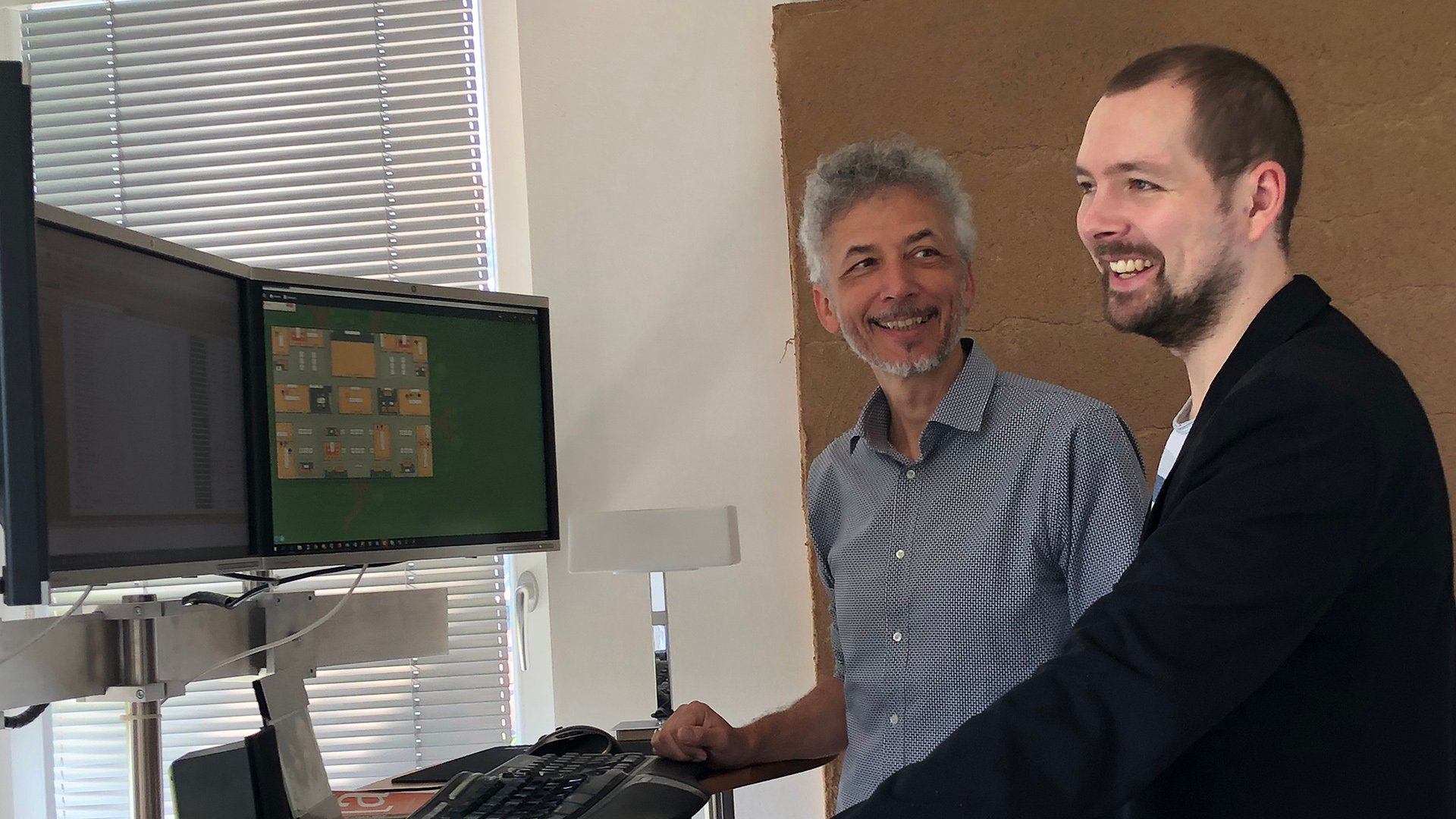
Non-automated workflows, manual procedures and technical challenges – lots of clients are missing out on the seamless connectivity the translation process can offer. That’s why the Localization Engineers at MEINRAD work in the background to enhance and automate these processes: they know that optimizing data transfer, translation systems and client communication ultimately benefits everyone.
Producing a translation from the original text is often more complicated than it may seem. Non-automated process, complex systems and specific requirements can cause technical problems throughout the process. To ensure translation projects run as smoothly as possible, at MEINRAD we have a team of Localization Engineers who work behind the scenes to overcome these technical challenges and continuously improve the processes involved in producing translations. Their aim is to establish optimized, automated workflows that make life easier for Project Managers, translators, and ultimately clients too. But how exactly does MEINRAD meet this huge demand for connectivity?
Turning manual steps into automated processes
Ideally, a project would go as follows:
- the digital format of the original text is compatible with the translation systems the agency uses,
- the translation itself proceeds without any technical hitches, and
- the finished translation is easy to integrate into the client’s in-house systems.
But in reality, most projects don’t run as smoothly as that. Each client has their own systems with their own requirements, and this is often the sticking point: hardly any programs allow the different systems to talk to each other and transfer content in various formats from one system to another as part of an automated process. So the Localization Engineering team has a crucial role to play in ensuring clients get their texts back in the format they need and can integrate them into their own systems. They’re responsible for preparing files before translation and exporting them after translation, which sometimes involves adapting the tools we use in order to meet specific client requirements.
Complex projects are the clearest example of where there can be considerable scope for optimization. If a text needs to be translated into 30 languages, and it takes 30 times longer than it does to translate it into one language, that means some parts of the process are being repeated – extra work which could be avoided by automating the process. The MEINRAD Localization Engineers are the experts when it comes to identifying these kinds of problems and coming up with optimized solutions. And this automation doesn’t just save time and reduce the workload for Project Managers and clients: it also minimizes the risk of errors in the process.
Eyes open from the start
Improving connectivity usually begins before the translation itself is produced. When they first request translations, many clients don’t know what their options are and aren’t aware of everything their systems can do. Each client uses different systems and has different requirements, so a good translation partner will talk to them at length before producing any translations in order to establish the best workflows for that particular client. This initial consultation is crucial – without it, problems will inevitably occur down the line that cost everyone involved time and money.
Using software more effectively
The two most important programs MEINRAD uses are the project management tool XTRF and the CAT (computer-aided translation) tool memoQ. But even these advanced programs have their limits, and often it can impede smooth delivery of a translation project: resolving these kinds of issues is where Localization Engineers make the difference. One example of the technical tweaks they make which might not be immediately obvious to clients, but which can be of real benefit, is finding and exploiting the right tools for CMS (content management system) connectivity. There are hundreds of CMSs available, but translation agencies and clients only need to work with one or two if they know how to adapt them to their needs. These tools can then offer the seamless connectivity and optimized process required in order to deliver integrated, all-round solutions. That’s what MEINRAD is all about, so we never stop testing different products – what they offer could prove invaluable.
Keeping things simple for our clients
All MEINRAD clients have access to our customer portal, which gives them an overview of all their translation projects. The files they work with are often too large or too commercially sensitive to be sent by e-mail, and the portal allows them to upload their files securely and launch their projects there. The portal provides a clear overview of all their previous and ongoing projects and allows all the necessary data to be transferred – think of it as a tool that helps our clients take a big step towards the long-term goal of automating the entire translation process. Working together with the same tool also brings their team closer to our team, which is another key benefit in a relationship that depends on trust. After all, optimizing processes and strengthening client-agency relationships doesn’t just pay off for MEINRAD: ultimately, it saves our clients valuable time and stress too.
A long journey
Process optimization never stops: without it, clients will be a long way short of full connectivity. With the variety of systems available and the lack of optimized solutions, there’ll always be a need for experts in process optimization. The MEINRAD customer portal and the advanced tools we use are the important first steps on that journey towards giving our clients even better workflows and smoother project delivery – and we won’t ever stop improving our connectivity. Our aim is to automate as much of the translation process as possible, as ultimately that will help our translators and Project Managers produce even better results for our clients.
Main image: © MEINRAD

